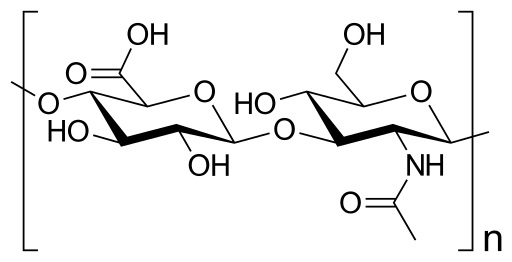Hyaluronic acid is an anionic non-sulphate glycosaminoglycan. The molecular formula of hyaluronic acid is (C14H21NO11)n. In addition, hyaluronan, hyaluronate, and hyaluronate are the other names for hyaluronic acid. It naturally occurs within the body of humans. Hyaluronic acid is present, especially within the eyes, joints, skin, and connective tissues. It generally occurs even within the human embryo. Hyaluronic acid is a very slippery substance. It is a polymer, meaning that it contains large chains of monomer molecules combined together. This large chain has certain spots to which carbon molecules and other molecules attach. For example, one-quarter teaspoon of hyaluronic acid can absorb and holds about half a gallon of water. Therefore, we consider it one of the best polymers to absorb water.
There are three types of hyaluronic acids of different natures: hydrolyzed hyaluronic acid, sodium hyaluronate, and sodium acetylated hyaluronate. Since there are many spaces in the hyaluronic acid molecule for the other molecules to attach to, hyaluronic acid also acts as a good material for the transport of certain substances. Several molecules are transported throughout the body by hyaluronic acid. It also attaches itself to the cells; this feature in hyaluronic acid helps in the target delivery of medications. However, hyaluronic acid also acts as a scaffolding structure, which allows tissues to grow. This is how wounds heal in the body.

Leave a comment